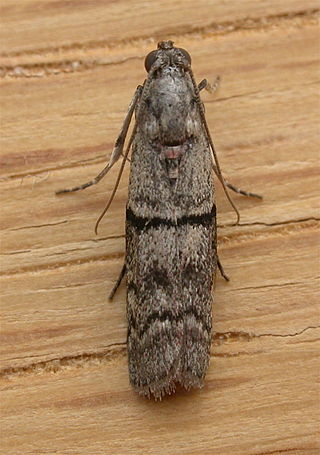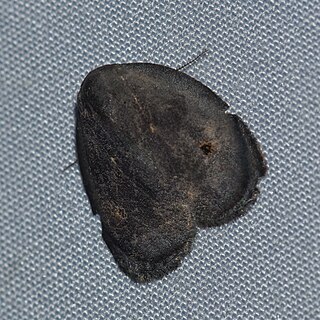
The Hepialidae are a family of insects in the lepidopteran order. Moths of this family are often referred to as swift moths or ghost moths.

Micrommata virescens, common name green huntsman spider, is a species of huntsman spiders belonging to the family Sparassidae.

Spilomelinae is a very species-rich subfamily of the lepidopteran family Crambidae, the crambid snout moths. With 4,135 described species in 344 genera worldwide, it is the most speciose group among pyraloids.

Omiodes is a moth genus in the family Crambidae. Several species are endemic to Hawaii.

Hemonia is a genus of moths in the family Erebidae first described by Francis Walker in 1863. They are found only in Sri Lanka and Borneo.

Metasia is a genus of moths of the family Crambidae.

Hypodoxa is a genus of moths in the family Geometridae described by Prout in 1912.

Niceteria is a monotypic moth genus in the family Geometridae erected by Alfred Jefferis Turner in 1929. Its only species, Niceteria macrocosma, the showy geometrid, is found in Australia. It was first described by Oswald Bertram Lower in 1899.

Lichenaula is a genus of Australian moth of the family Xyloryctidae.

The Phycitini are a tribe of moths of the family Pyralidae.
Gymnasura saginaea is a moth of the subfamily Arctiinae. It was described by Alfred Jefferis Turner in 1899. It is found in Queensland, Australia.
Hemonia monochroa is a moth of the family Erebidae. It was described by George Hampson in 1914. It is found on New Guinea.
Hemonia murina is a moth of the family Erebidae. It was described by Walter Rothschild in 1913. It is found on New Guinea.

Hemonia orbiferana is a moth of the family Erebidae. It was described by Francis Walker in 1863. It is found in Sri Lanka, India, Myanmar, Singapore, as well as on Borneo and Peninsular Malaysia.
Hemonia pallida is a moth of the family Erebidae. It was described by George Hampson in 1914. It is found in Australia.

Hemonia rotundata is a species of moth in the family Erebidae. It was described by Snellen in 1879. It is found on Java, Bali, Borneo, Peninsular Malaysia, the Philippines and Sulawesi. The habitat consists of primary and secondary forests.
Hemonia schistacea is a moth of the family Erebidae. It was described by Walter Rothschild in 1913. It is found in Papua New Guinea.
Hemonia schistaceoalba is a moth of the family Erebidae. It was described by Walter Rothschild in 1913. It is found in New Guinea.
Hemonia simillima is a moth of the family Erebidae. It was described by Walter Rothschild in 1913. It is found in Australia.












